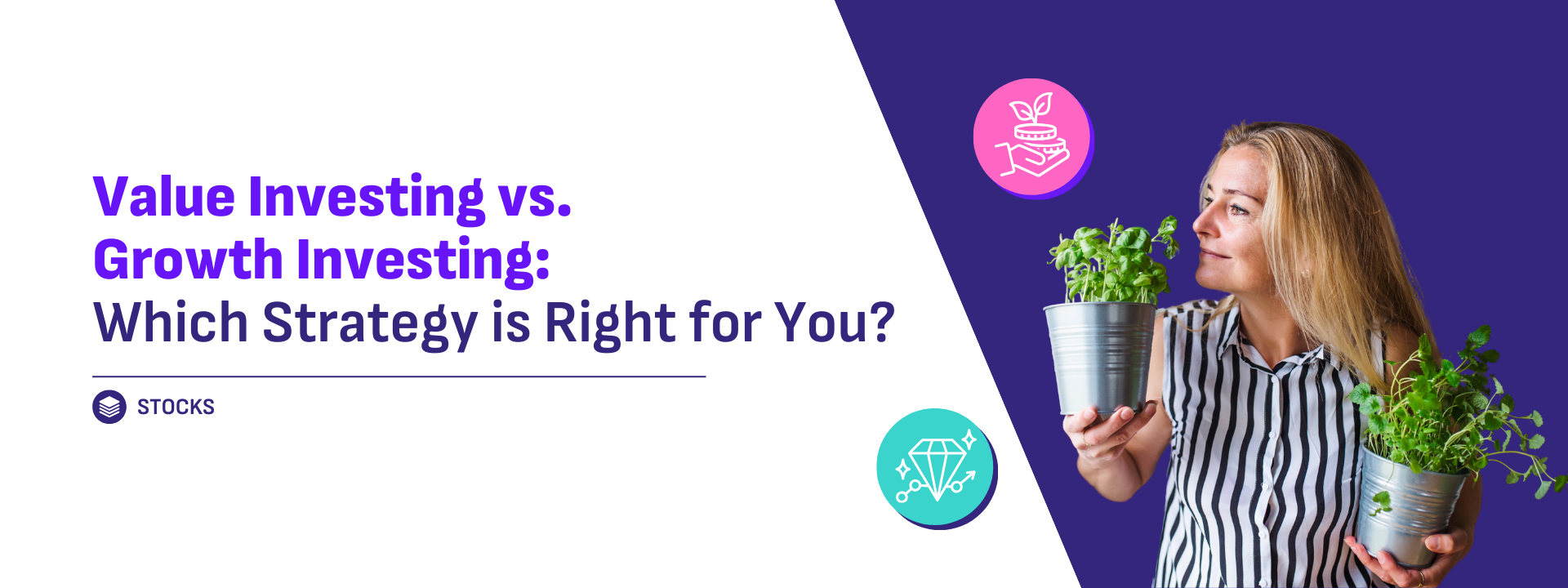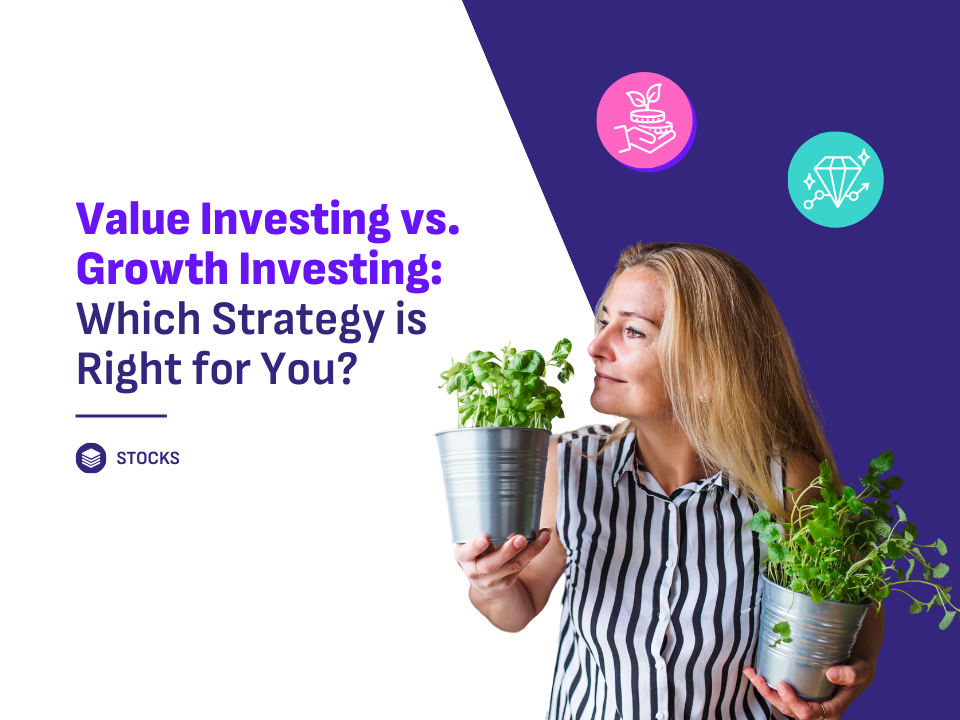

Value Investing vs. Growth Investing: Which Strategy is Right for You?
Introduction
In the world of investing, two popular strategies often come to the forefront: value investing and growth investing. Both approaches have their merits and can offer substantial returns, but they cater to different investor preferences and financial goals. Understanding the differences between value and growth investing is crucial for selecting the strategy that aligns with your investment objectives and risk tolerance. This article compares and contrasts value investing and growth investing, highlighting the pros and cons of each approach.
1. Value Investing
a. Definition and Philosophy
Value investing involves purchasing stocks that are undervalued relative to their intrinsic worth. The philosophy is based on the belief that the market sometimes misprices stocks, offering opportunities to buy shares at a discount. Value investors seek to identify stocks trading below their intrinsic value, often determined through financial metrics such as price-to-earnings (P/E) ratios, book value, and dividend yields.
b. Key Characteristics
- Focus on Undervaluation: Value investors look for stocks that are undervalued compared to their true worth. This often involves analyzing financial statements, earnings reports, and market conditions to find bargains.
- Long-Term Horizon: Value investing typically requires a long-term perspective. Investors are patient, willing to hold onto stocks until their true value is recognized by the market.
- Dividend Income: Many value stocks offer attractive dividend yields, providing investors with a steady stream of income in addition to potential capital appreciation.
c. Pros of Value Investing
- Lower Risk of Overpaying: By purchasing stocks at a discount, value investors reduce the risk of overpaying and potentially suffering significant losses.
- Potential for Stable Returns: Value stocks often belong to established companies with stable earnings, offering a lower risk profile and more predictable returns.
- Dividends as Income: Value stocks frequently offer dividends, providing additional income and a cushion during market downturns.
d. Cons of Value Investing
- Longer Time to Realize Gains: The market may take time to recognize the true value of undervalued stocks, leading to a longer wait for substantial returns.
- Potential for Value Traps: Some stocks may appear undervalued but are actually experiencing fundamental issues, leading to poor performance even after a long holding period.
- Limited Growth Potential: Value stocks might have limited growth potential compared to high-growth stocks, potentially leading to lower capital appreciation.
2. Growth Investing
a. Definition and Philosophy
Growth investing focuses on buying stocks of companies expected to grow at an above-average rate compared to the overall market. Growth investors are less concerned with the current valuation of a company and more interested in its potential for future growth. This approach involves investing in companies with strong revenue and earnings growth, innovative products, or expanding market opportunities.
b. Key Characteristics
- Focus on Growth Potential: Growth investors prioritize companies with high growth potential, even if their current valuation appears high. They rely on future earnings projections and market trends to make investment decisions.
- Shorter-Term Focus: Growth investing often involves a shorter-term perspective, as investors aim to capitalize on rapid growth and emerging trends.
- Less Emphasis on Dividends: Growth stocks typically reinvest earnings into the business rather than paying dividends, prioritizing reinvestment over income generation.
c. Pros of Growth Investing
- High Potential Returns: Growth stocks have the potential for significant capital appreciation due to their rapid growth and innovation, offering the possibility of high returns.
- Exposure to Emerging Trends: Growth investors can benefit from investing in emerging industries and technologies, capturing opportunities in high-growth sectors.
- Dynamic Portfolio: Growth investing can lead to a dynamic and evolving portfolio, reflecting shifts in market trends and technological advancements.
d. Cons of Growth Investing
- Higher Risk: Growth stocks often come with higher volatility and risk, as their valuations may be driven by speculative expectations rather than established fundamentals.
- No Dividends: Growth stocks typically do not provide dividends, meaning investors rely solely on capital appreciation for returns.
- Potential for Overvaluation: Growth stocks can become overvalued if expectations are too optimistic, leading to potential losses if growth projections do not materialize.
3. Which Strategy is Right for You?
a. Assess Your Investment Goals
- Value Investing: If you are seeking stable returns, income through dividends, and prefer a lower-risk approach, value investing may align with your goals. This strategy is suitable for long-term investors who are patient and prefer to buy stocks at a discount.
- Growth Investing: If you are looking for high capital appreciation and are willing to accept higher risk, growth investing may be more appropriate. This strategy is ideal for investors with a higher risk tolerance and a shorter-term focus.
b. Consider Your Risk Tolerance
- Value Investing: Suitable for those with a lower risk tolerance who prefer to invest in established companies with stable earnings.
- Growth Investing: Suitable for investors with a higher risk tolerance who are comfortable with volatility and seeking high growth potential.
c. Evaluate Your Investment Horizon
- Value Investing: Best for those with a long-term investment horizon who can wait for the market to recognize the true value of their investments.
- Growth Investing: Best for those with a shorter-term investment horizon who are looking to capitalize on rapid growth opportunities.
Summary
Both value investing and growth investing offer distinct advantages and align with different investment philosophies. By understanding the characteristics, pros, and cons of each strategy, you can make informed decisions that match your financial goals, risk tolerance, and investment horizon. Whether you choose to focus on undervalued stocks with stable returns or high-growth companies with potential for significant appreciation, aligning your investment strategy with your personal preferences will enhance your chances of achieving long-term financial success.


